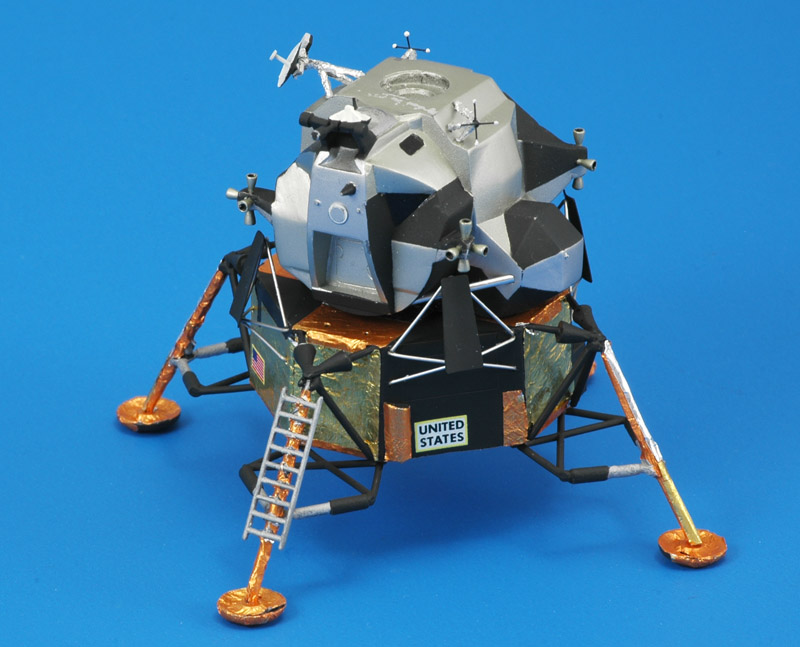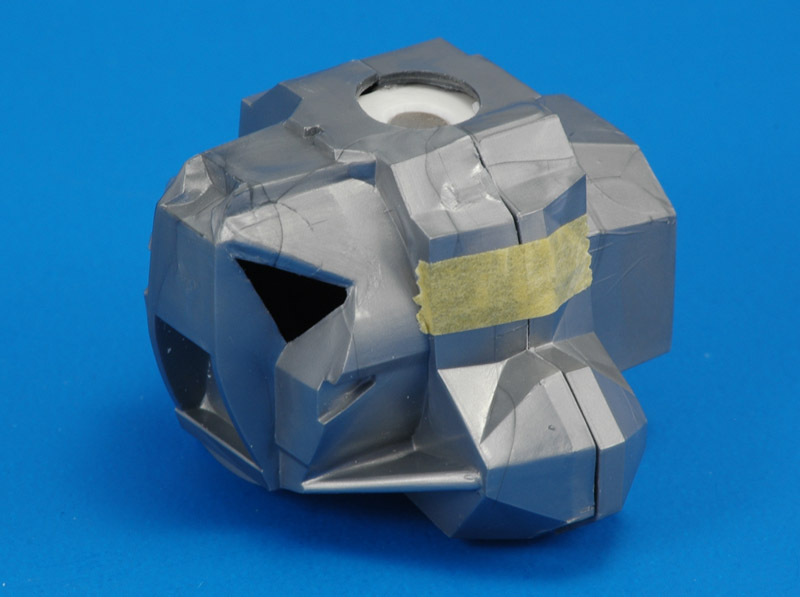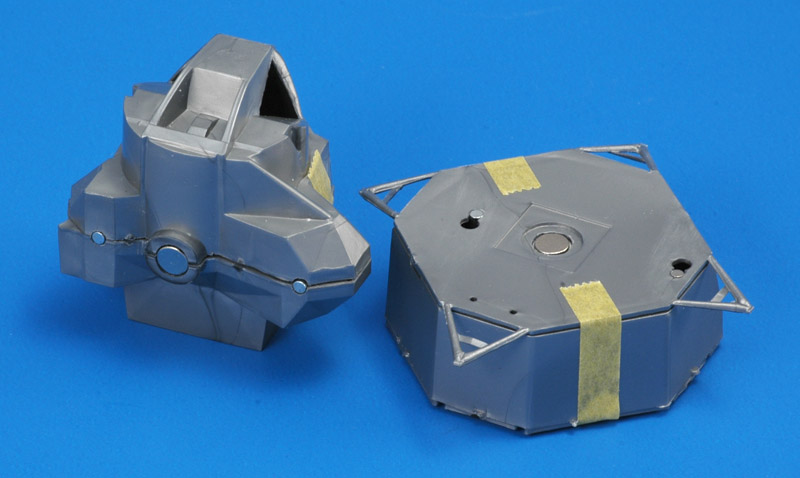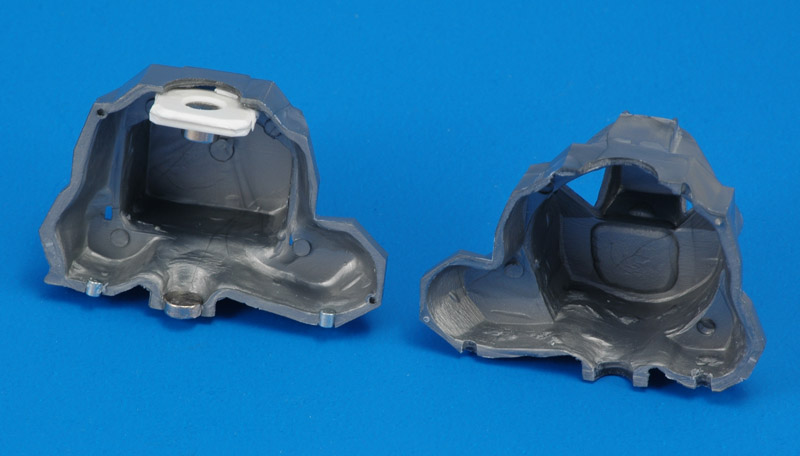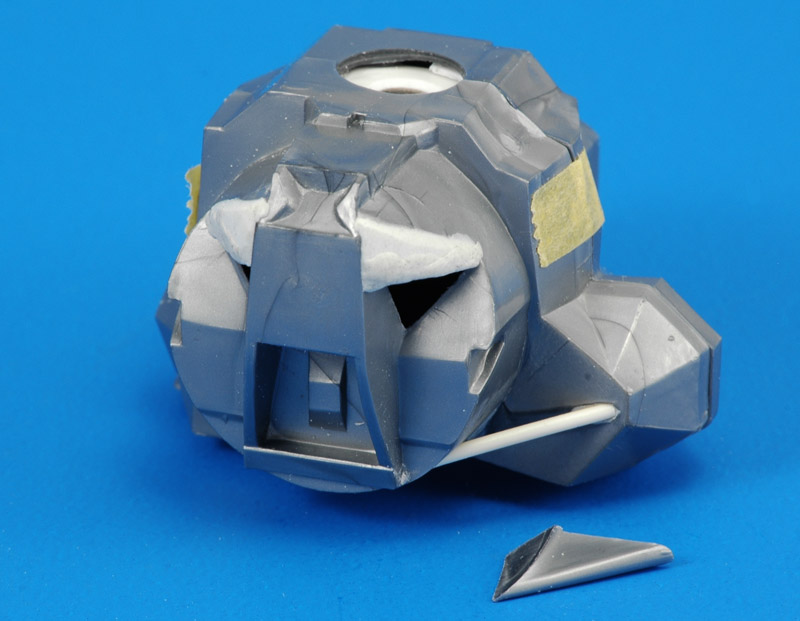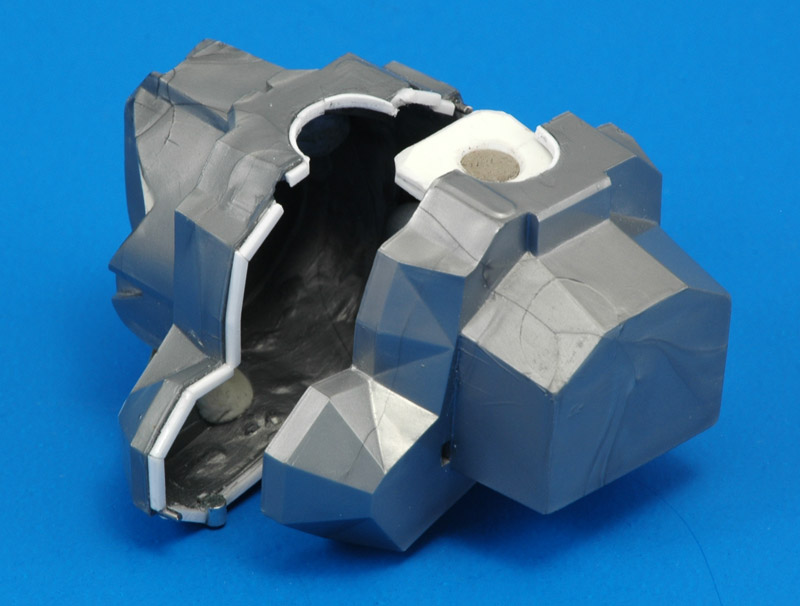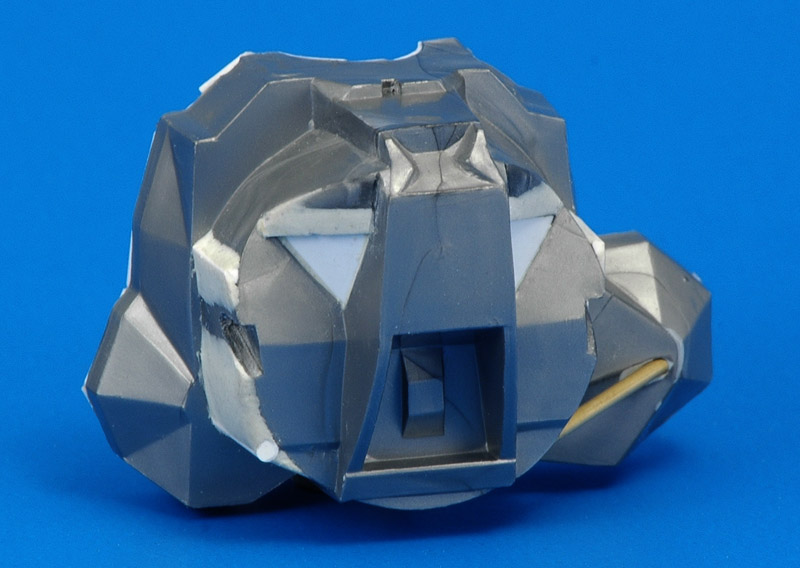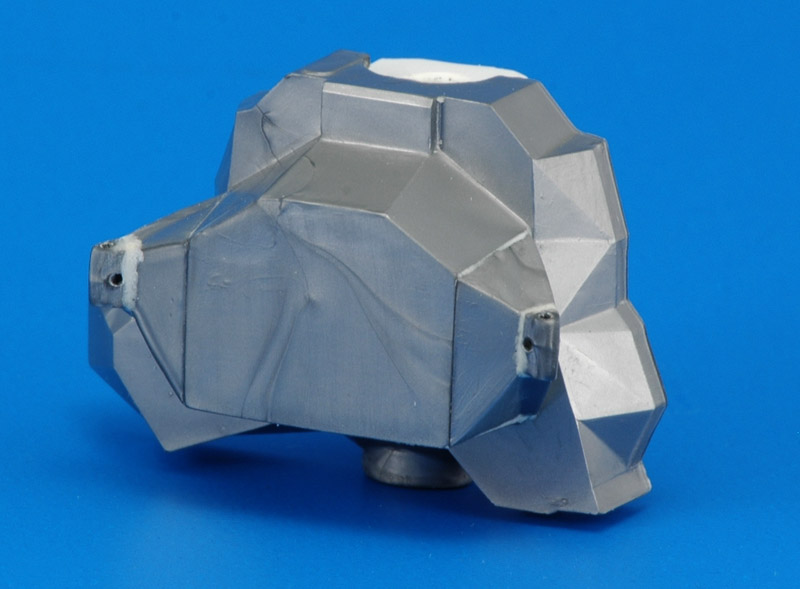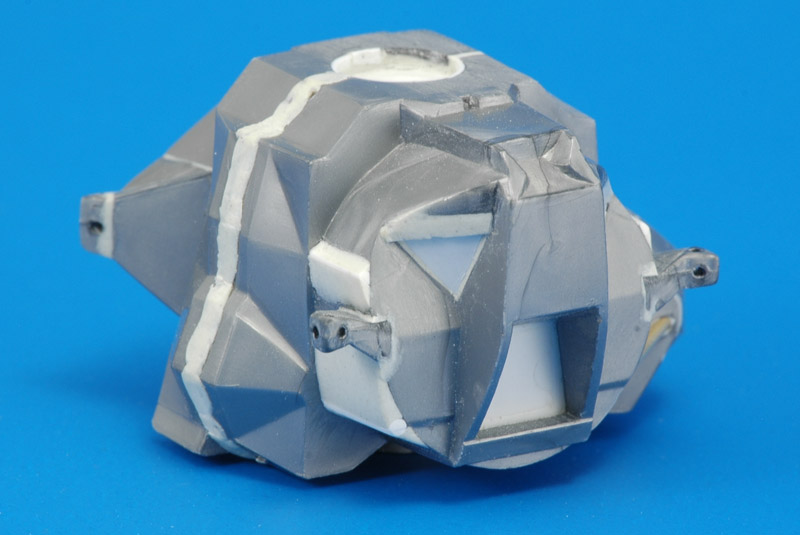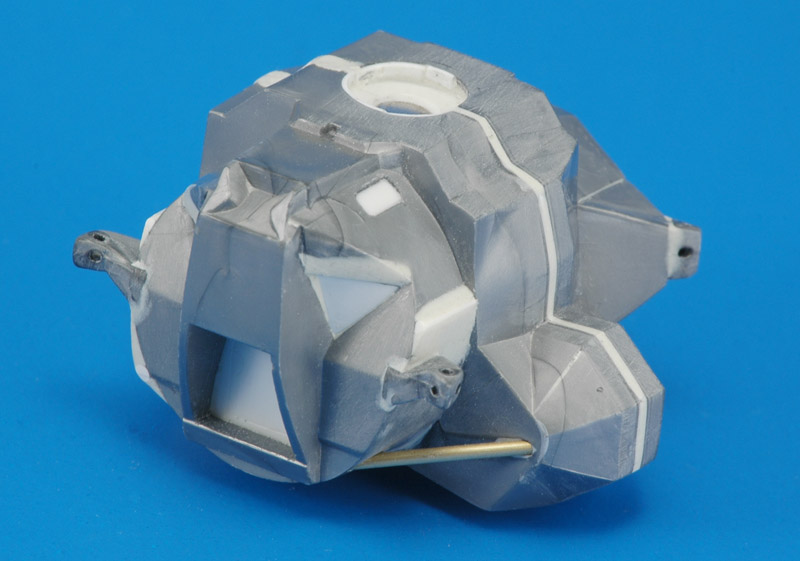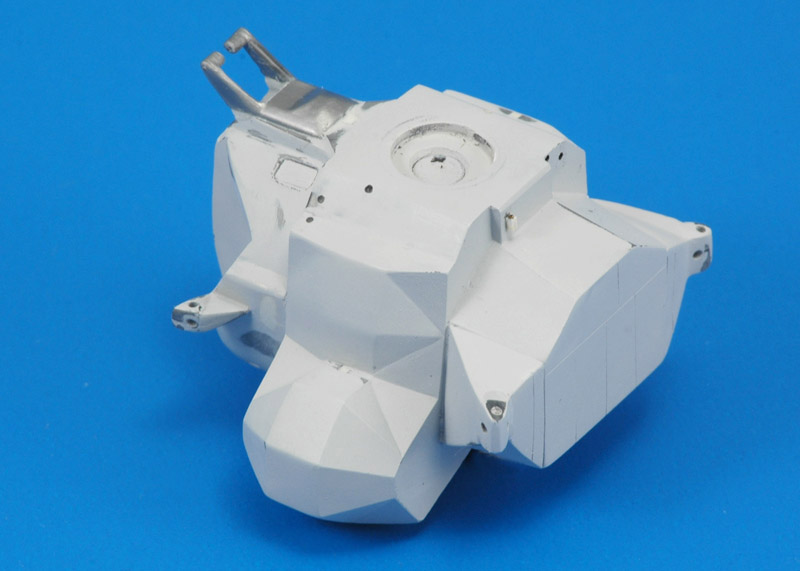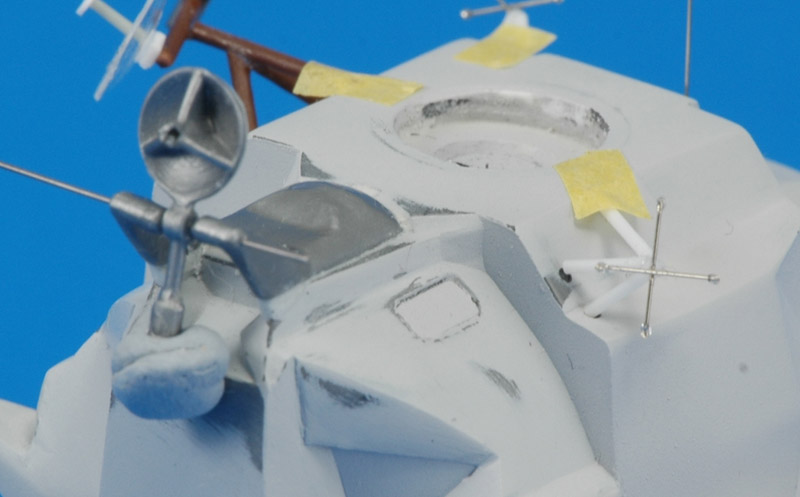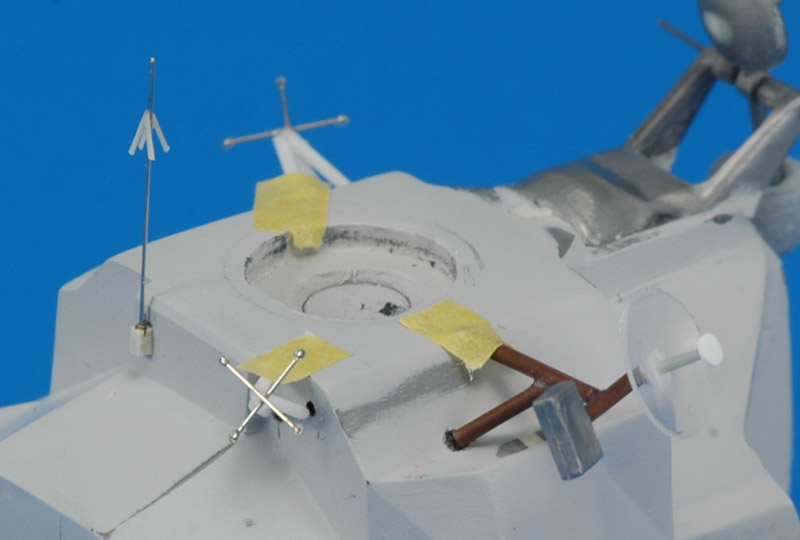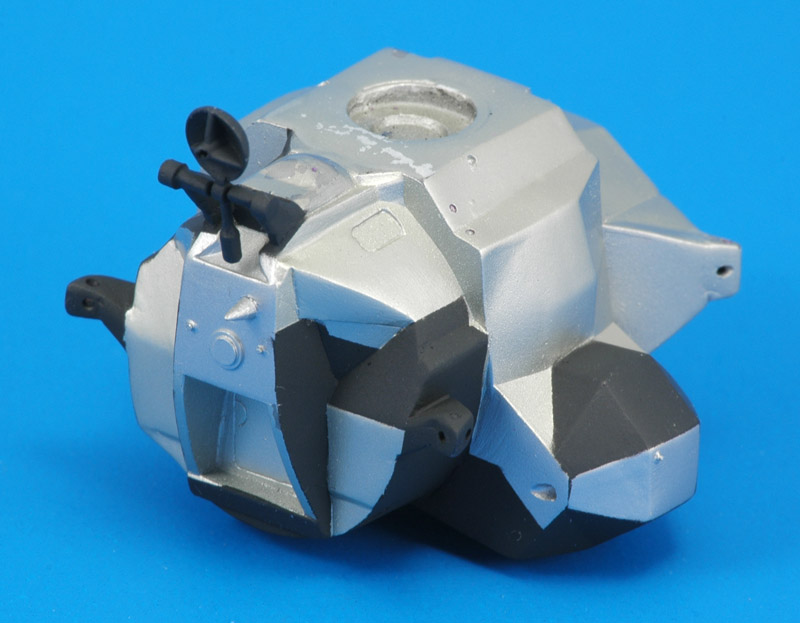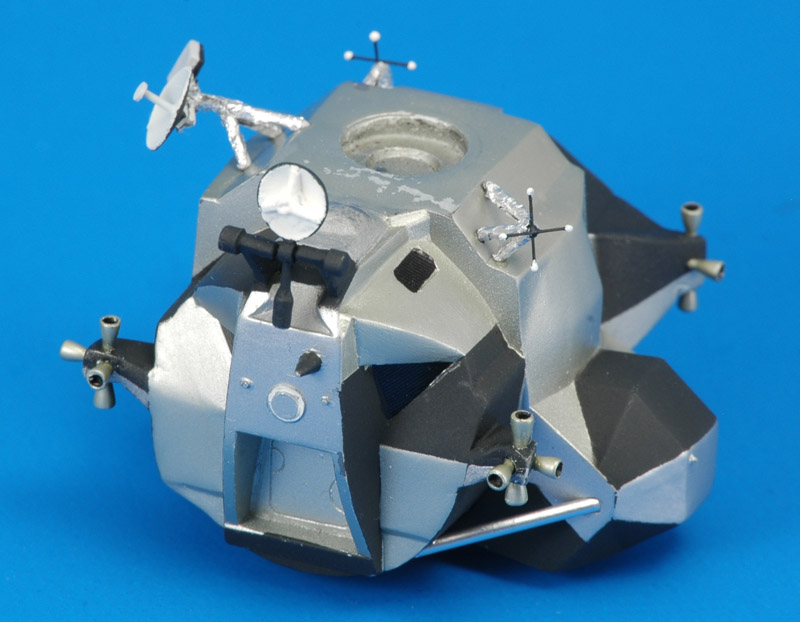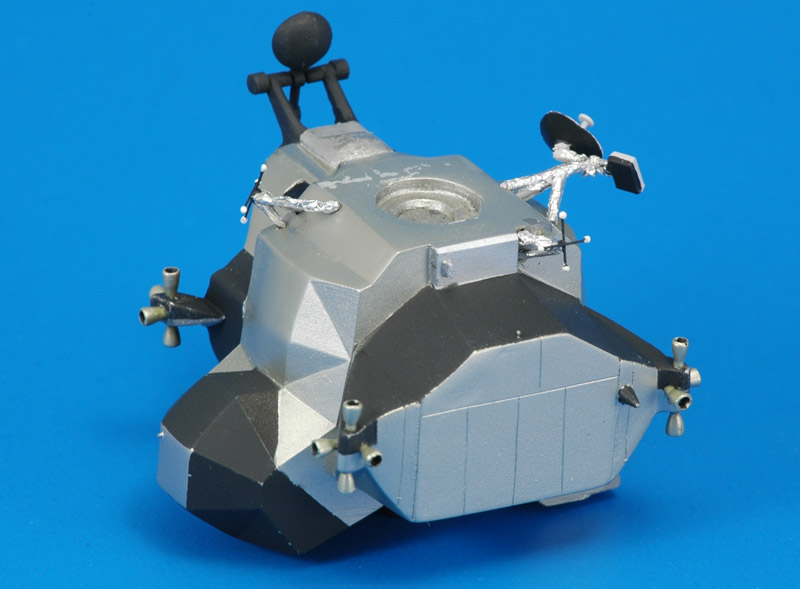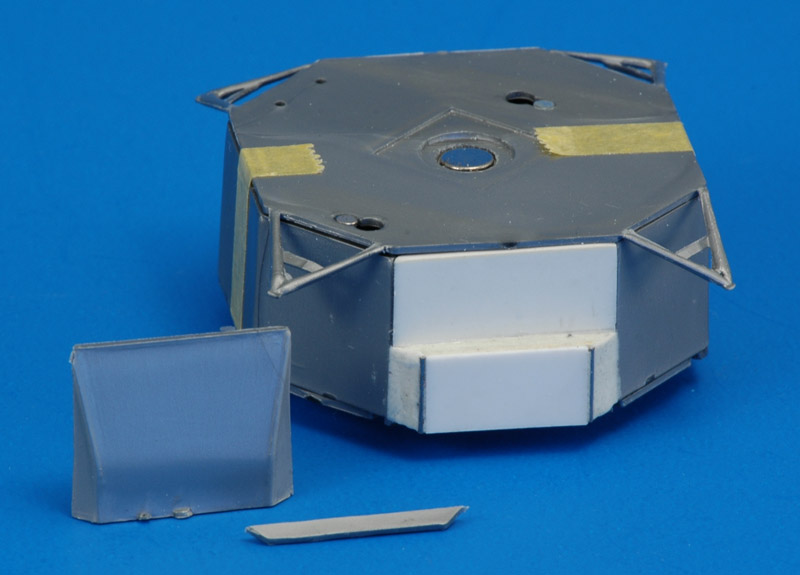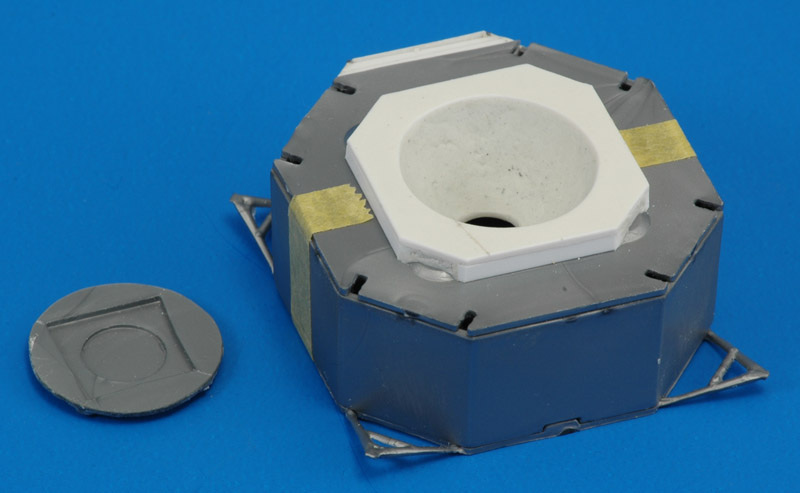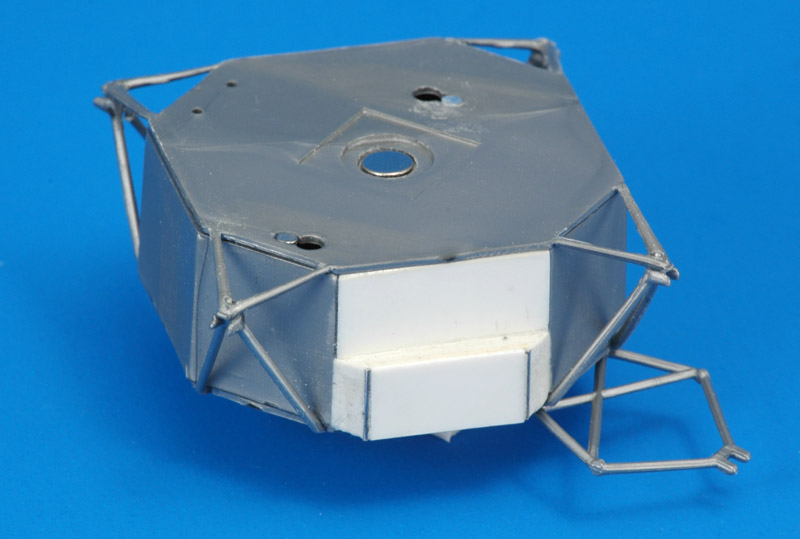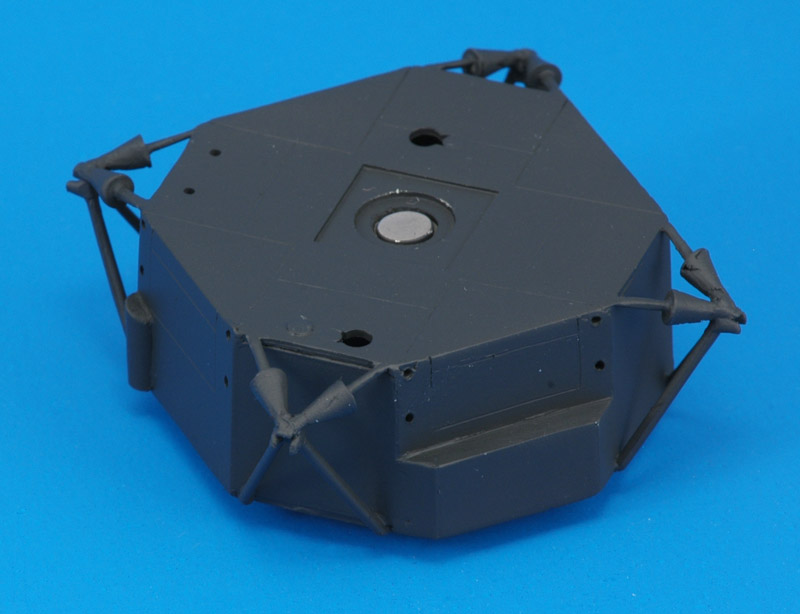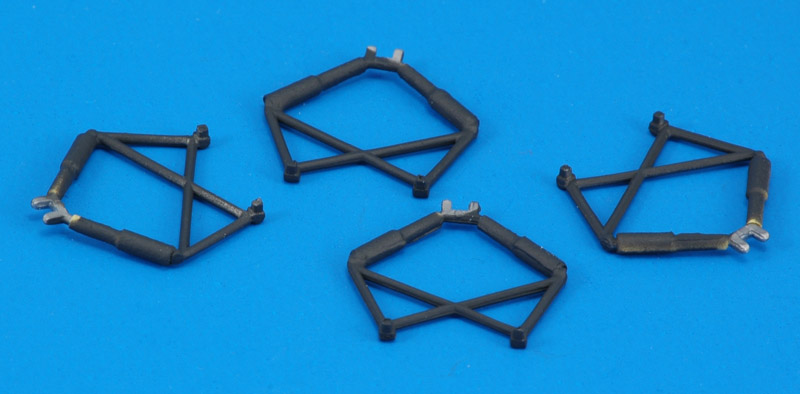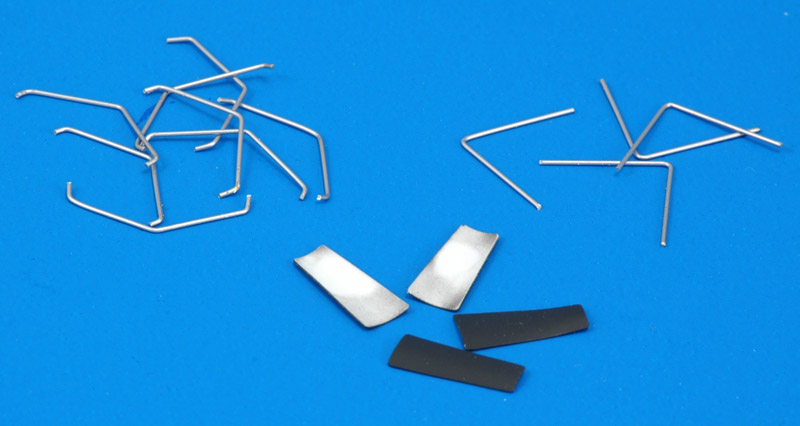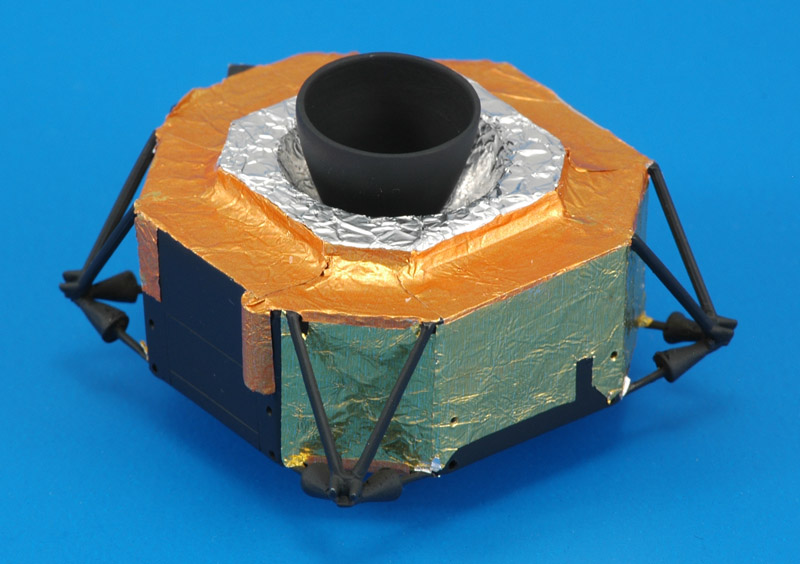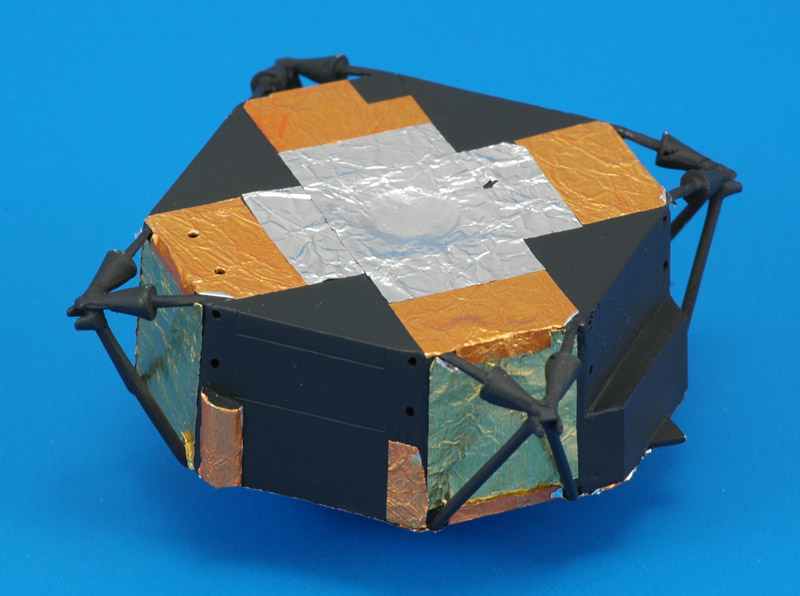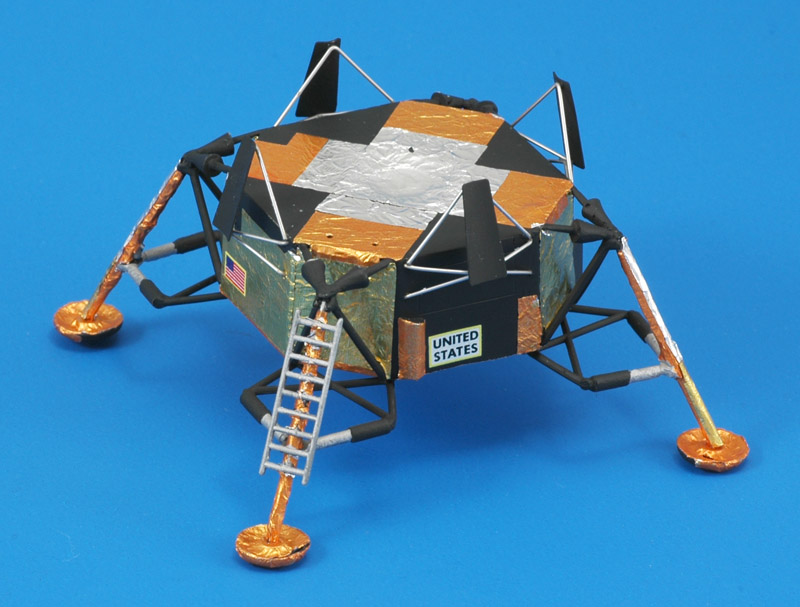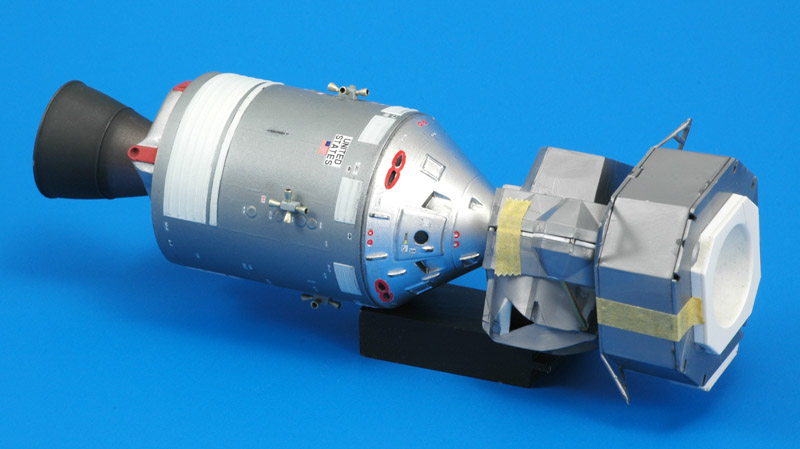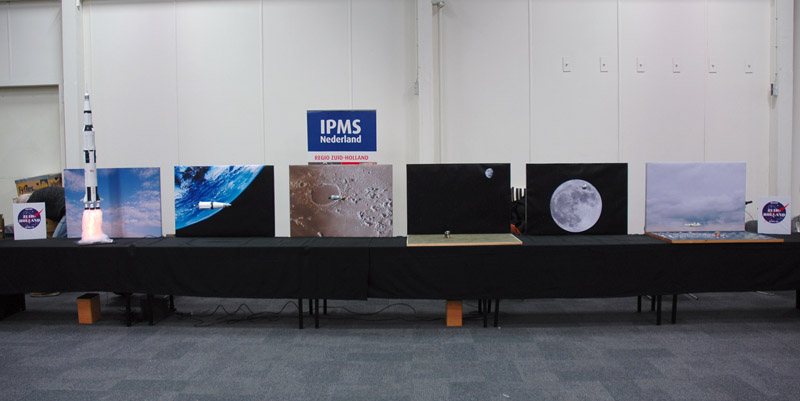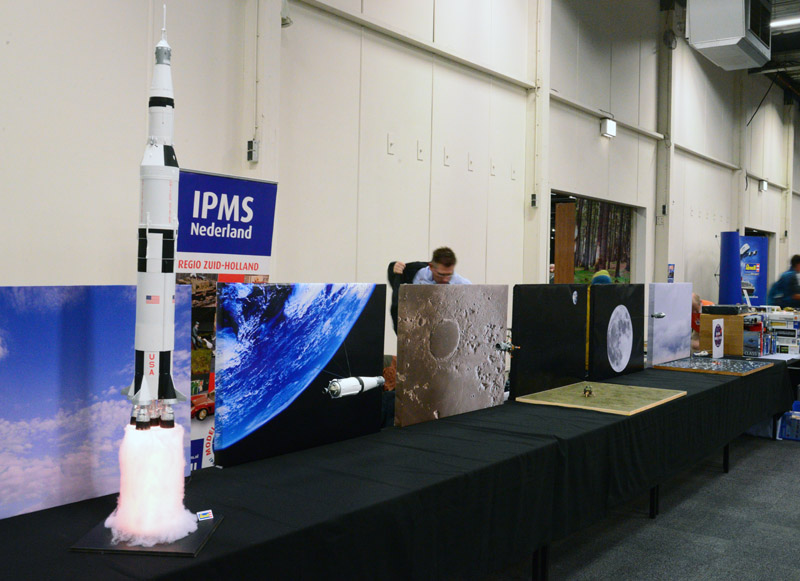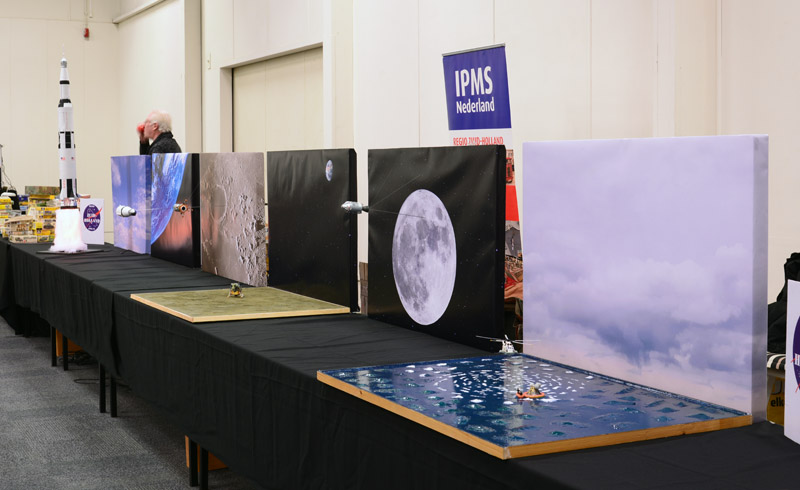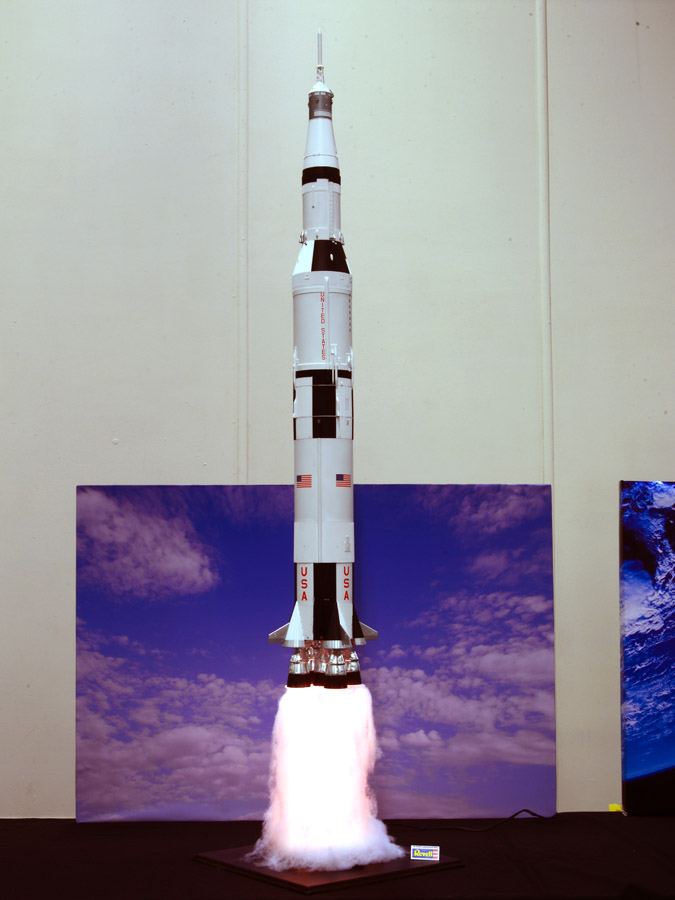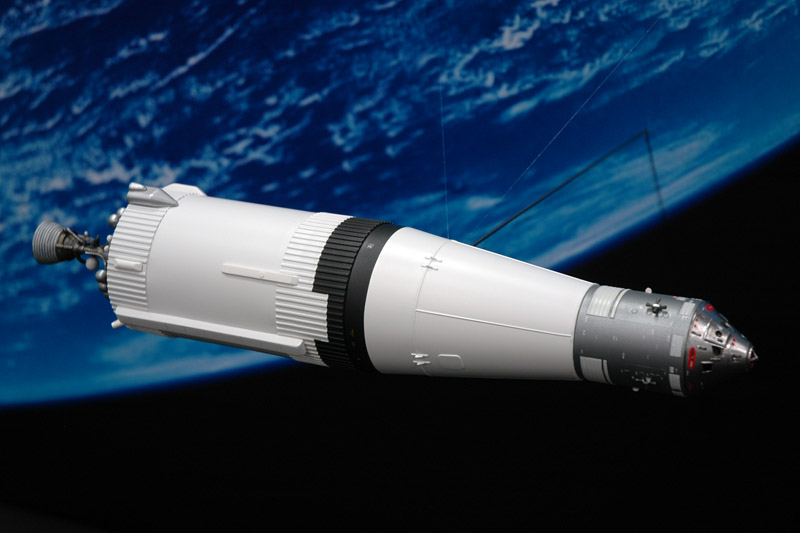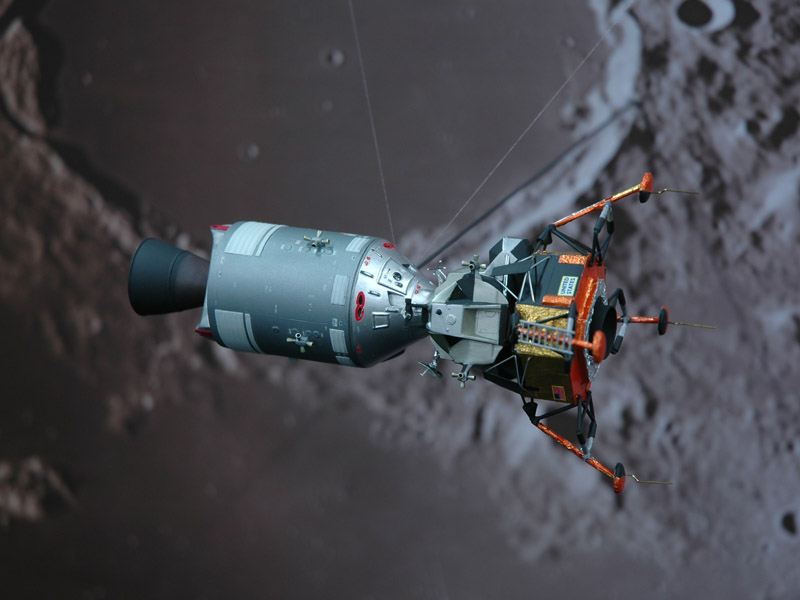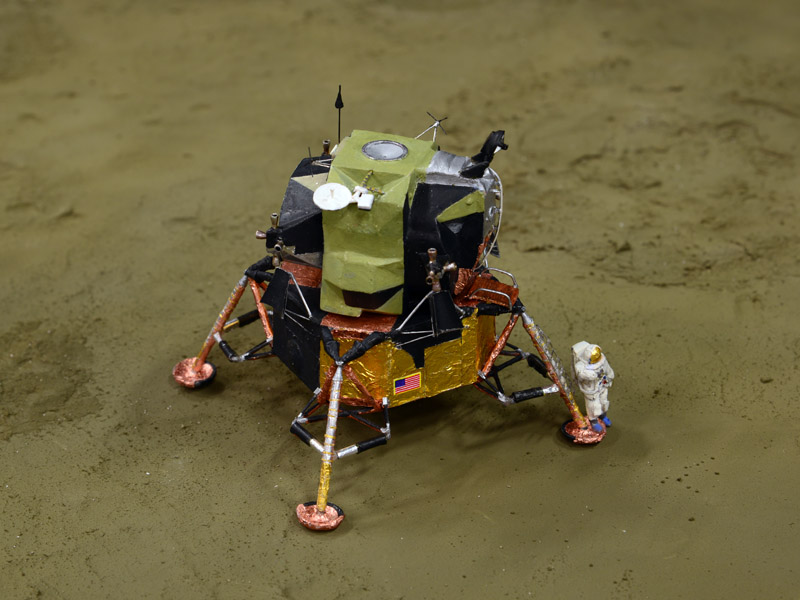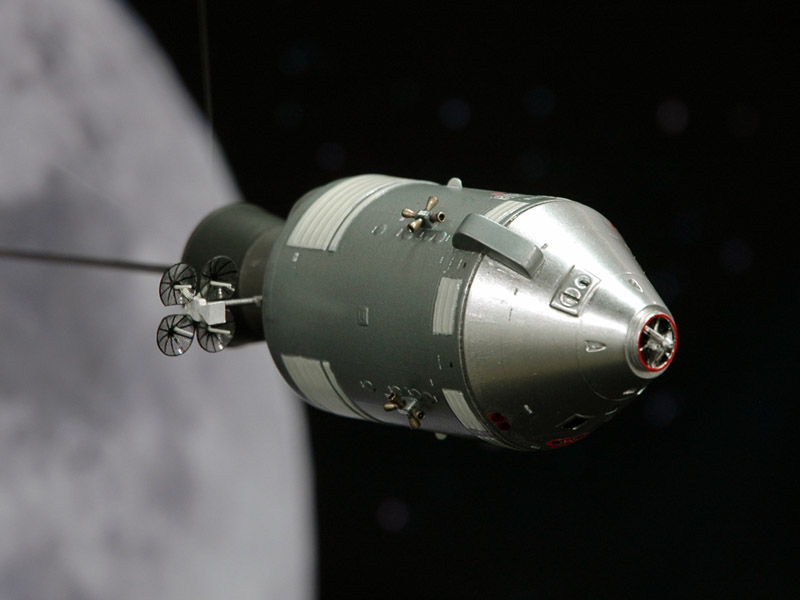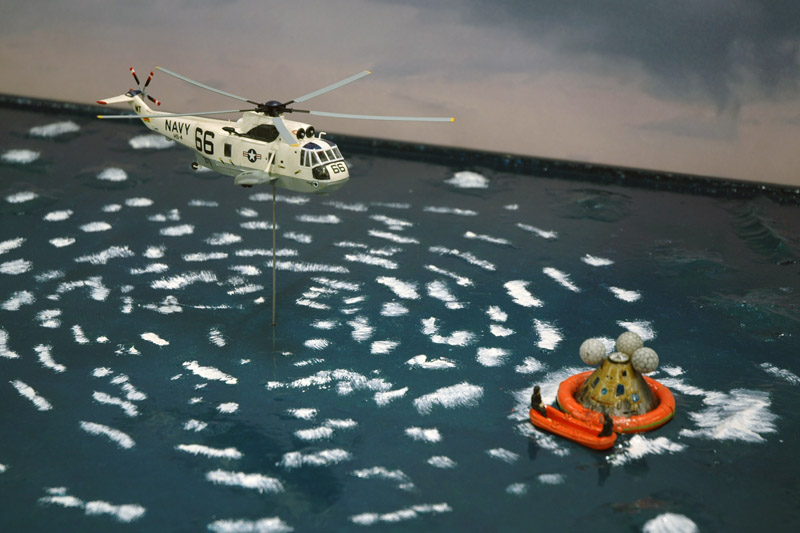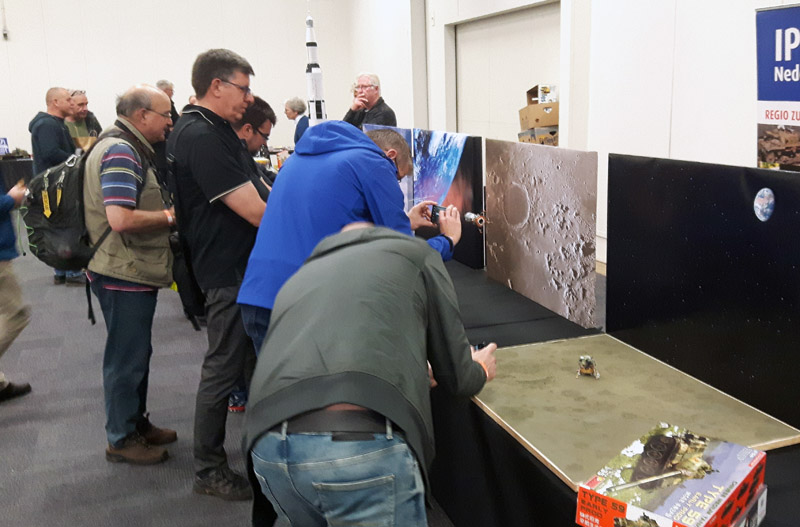There is no resin replacement for the Lunar Module (LM), so building the Revell original was the only route. I guess it predates the actual Apollo 11 mission, so it's missing a number of details, and probably some details are not correct. I can't give you all details, since this build was done in a hurry, and prevented me from doing much research.
My first comment on the Ascent Module would be that I'm not sure that the overall shape is correct. Although I did not study it in detail, I think the facets are not all correct. Given the short time to build the model, it was not an option for me to modify these facets. I did however improve some other details of the model. I really liked the effect of the improved resin RCS nozzles on the model. Especially those of the Ascent Module are pretty ugly, basically just cylinders.
For the Descent Module, I can point out a few things. One is the descent rocket motor nozzle on the bottom side, that is molded only partially, and also lacks the large cavity in which it can gimbal. The thrust deflectors for the RCS nozzles of the Ascent Module are also missing. They were probably far too delicate to mold, if Revell had wished to include them.
| 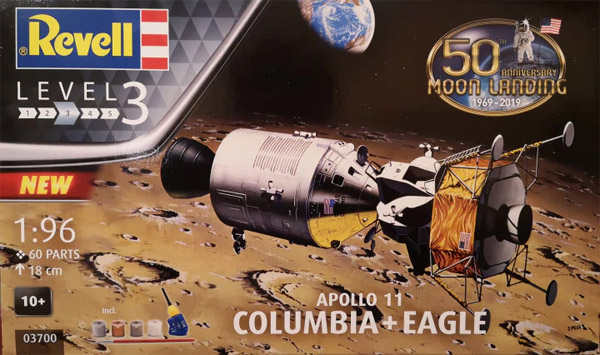
|
